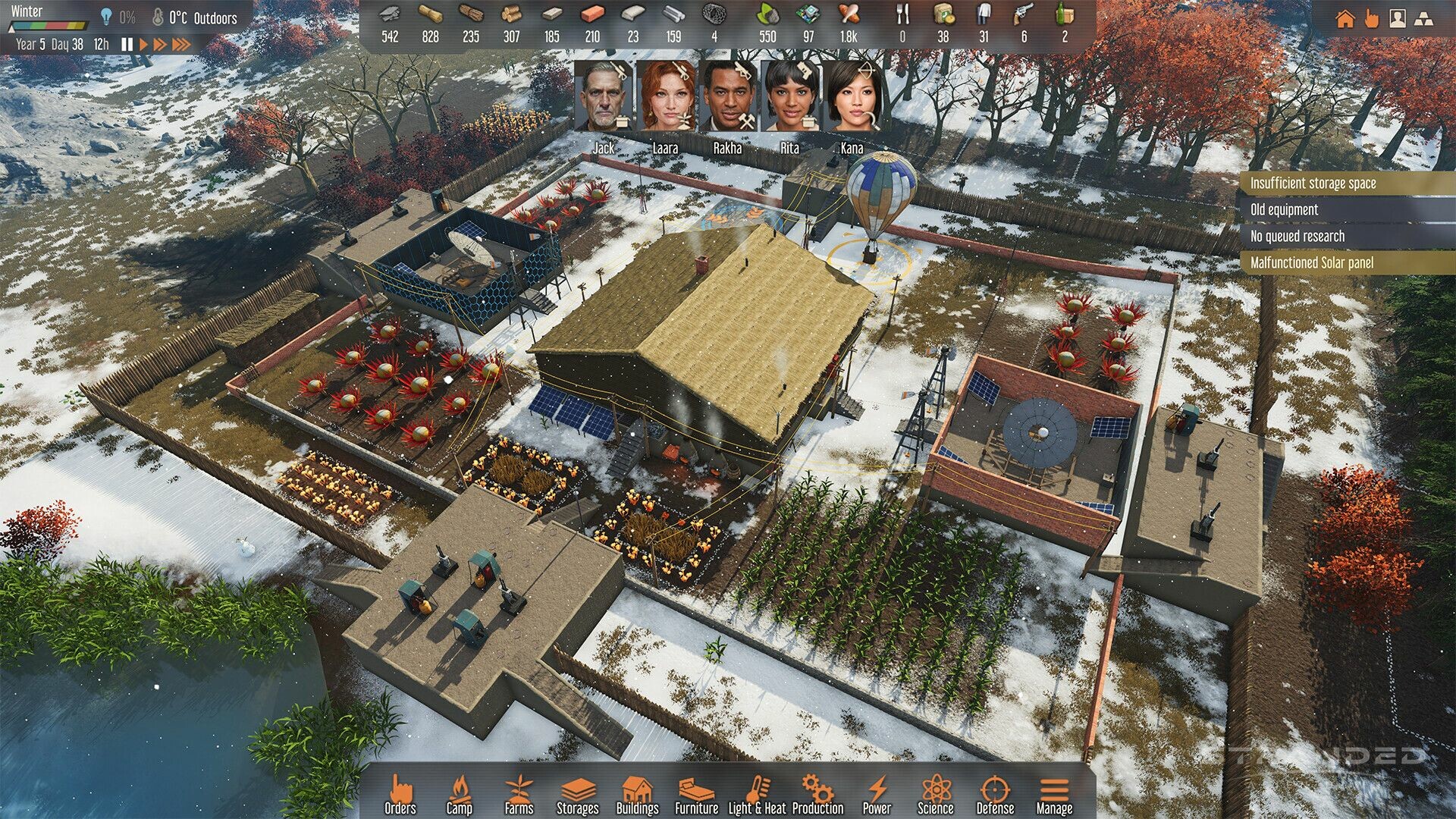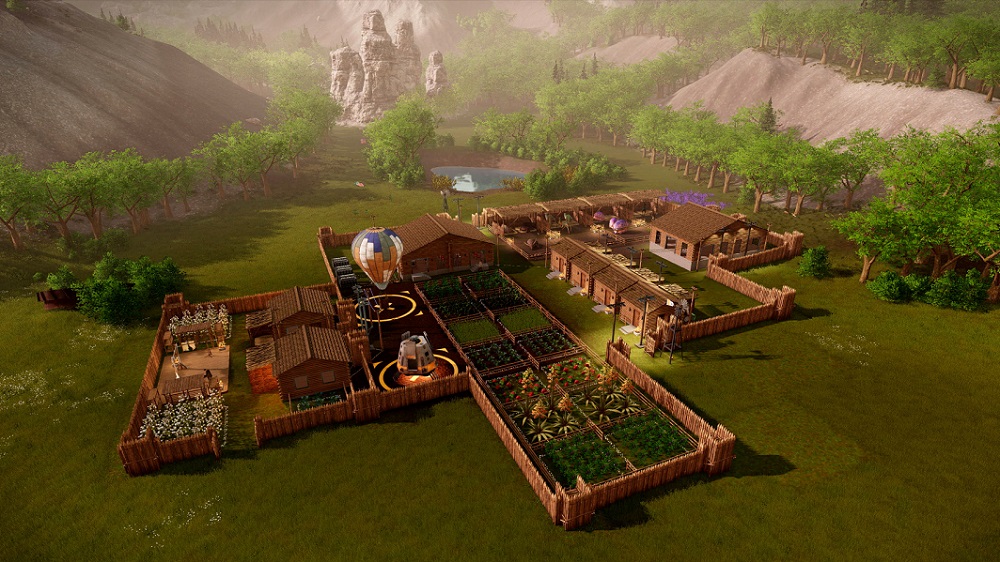Stranded: Alien Dawn is the Sims in space, but it’s not quite paradise
Another day, another low-key strategy title makes its way to console — and this time it’s a hybrid of Surviving Mars, Aven Colony and… The Sims? Yes, you read that right — Stranded: Alien Dawn typically allows the player to work with just four to six characters in most scenarios, and these named individuals each have traits and characteristics that make them completely unique. It is this sense of personality that makes surviving the alien planet upon which the player finds themselves especially interesting!
In its current build, Stranded: Alien Dawn is very much a sandbox experience. The player will choose one of three missions (crash landing, military outpost or trade mission) and then set themselves in either a grassland or desert biome. They’ll select their moon (which determines the events that will occur) and can then modify the rules in specific ways to make the game easier or more tough. Finally, they’ll either choose or randomise their survivors — some of whom are pacifists or psychopaths, whilst others have specific fears or traits that might affect their behaviours.

With this motley crue, the player will touch down on an inhospitable planet and begin building a modest base. Starting structures include shelters made from scrap debris and straw beds, but workbenches, wooden buildings and ever more advanced construction methods will follow. Depending on your chosen scenario, the objective will certainly drive you right to the end of the tech tree in search of sustainable sources of power — including wind, solar and the elusive late game power-cells and battery arrays.
Setbacks will be constant and will often include crop failures and food shortages, or attacks by the local wildlife which become more and more frequent and dangerous as the game goes on. Weirdly, water is not a challenge for your people (even on the desert map), but food, sleep, exhaustion, stress and a need for relaxation all are. Thankfully, it’s relatively easy to get a decent farming setup in place, and even the most grotesque local creature can be hunted and eaten should insect legs be on your menu.

Things tend to go a bit awry when certain materials become necessary, however. Metal alloys (needed for anything advanced really) can be smelted from either ore (which is very scarce on most maps) or scrap metal — which thankfully falls from the sky continuously in the form of spaceship debris. The problem with scrap is that it is time consuming to salvage and will often be a long way from your camp, leading to long, slow days filled with exhaustion and hunger for whoever is sent to work.
On that note, Stranded: Alien Dawn uses a couple of matrices to control who does what. Firstly, there’s the daily schedule — which allows the player to set when survivors will work, sleep or relax. The second is the specific work plan, which offers both a simple and complex way to target certain survivors on certain tasks. In simple mode, you can set whether a survivor will do a task (if available) or not, whilst in complex mode, you can rank the priority of each task from 1 to 5. As an example, I will set all survivors (except those ranked as incapable) to all tasks, but in cases where they have a very low rating (0 to 2 for example) I will set the priority for that task as a 1.
This system generally works well, but as your camp expands and your survivors are juggling more work than they have time, it can go a bit haywire. I’ve spent more hours than I want to in Stranded: Alien Dawn simply fine tuning the game to ensure there is just enough cooking happening — not so much that food is wasted, and not so little that everyone is eating raw mushrooms and pickled veg. A certain level of micromanagement is needed as well, since later on in scenarios you’ll learn that there is new work to do that you hadn’t contemplated – for example when everyone’s clothes and weapons wear out at roughly the same time and you didn’t think to prepare replacements when times were easier — or warmer, should Summer have turned to Winter.

During the early game, the sense of exploration in Stranded: Alien Dawn is exciting and I loved getting to grips with my environment — where precious metals were, what the lay of the land was and so on. I also enjoyed some of the random events, but it wasn’t long before I learned how little exploration is needed in Stranded: Alien Dawn. In almost every game, I’ve ended up hunkering down very close to where I started, and whilst iterative improvements to your base are needed, venturing too far from it is not.
This is partly because there’s almost nothing of interest to find. You might get random events that result in new people joining your camp — but this isn’t down to exploration; it simply happens when the game decides it’s time. There are no caves to explore and no “unique” features in the terrain really — you can send explorers to distant places, but these work similarly to Frostpunk in that usually some kind of RNG generates you a resource or two and a random event, so it’s not really exploring in an openworld sense.
Anyhoo, that’s not actually a problem for Stranded: Alien Dawn, which after about thirty hours play, reminds me very much of The Sims — but set in space. You’ll have little people; they’ll need to eat, sleep, work and stay warm. They’ll get stressed and want to unwind, or they may even get scared and run away, or get angry and smash up the house — some might even become romantically involved with each other which can result in buffs and debuffs depending on whether they can actually spend time together (or not).

Everything else in Stranded: Alien Dawn is a distraction — alien attacks? Whatever, that’s just an excuse to build walls around your base, equip everyone with snazzy armour and then add some autoturrets. As soon as the attack is over, it’s back to micromanaging those work matrices because Beatrice is a lot better at research than Jonathan, but he had to step in for a few days to Beatrice having a nervous breakdown following her boyfriend (Daniel) being seriously injured by an oversized beetle.
Your mileage in Stranded: Alien Dawn may vary based on what you actually enjoy in games. If you like managing named individuals as they go about their lives and the idea of doing so in a challenging alien environment sounds interesting, then this might be for you. If you want a fast-paced RTS then Stranded: Alien Dawn will not meet that brief, and nor will it really live up to the expectations of people looking for the next SimCity in space. Personally, I found Stranded: Alien Dawn to be quite unique and interesting — and so I recommend it.
You can find Stranded: Alien Dawn on PC, Xbox and Playstation.
Comments are closed.